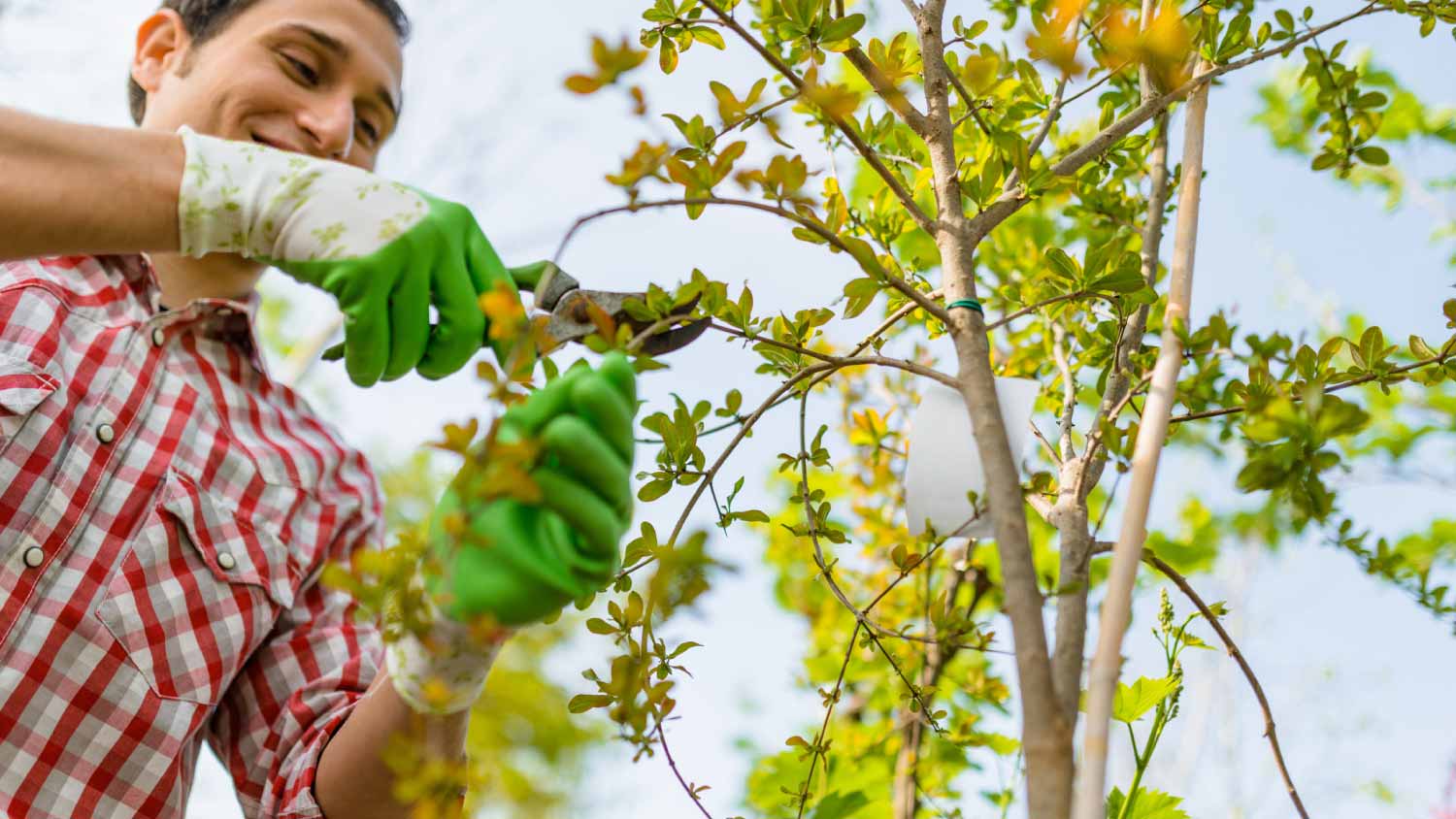
Trimming your bushes is one of the less costly aspects of landscaping, and it’s helpful to bundle many trimming services together to save money.
Don’t let these destructive bugs eat you out of treehouse and home


Nothing can make a homeowner’s heart sink like discovering a beautiful tree on your property has an infestation. If you live somewhere with ash trees in the neighborhood, you’re probably no stranger to the dreaded emerald ash borer, an invasive species that has decimated ash trees (Fraxinus sp.) for more than two decades in the United States.
Don't give up hope if you suspect your tree may have an emerald ash borer infestation. There are still a few things you can do to save your trees and fight these destructive bugs, but you’ll need to act fast.
If your neighbors or tree care professionals spot emerald ash borers in your neighborhood, you may get a warning notice from the city or a local arborist. You also may be unlucky enough to be the first tree on the block to show the signs. Here are a few of the warning signs to look for:
Shiny emerald-colored beetles about 1/2 inch long
Thinning and dying leaves on the upper third of the tree
Dying leaves spreading downward from the top of the tree
Bark that splits vertically
D-shaped holes in the bark about one-eighth of an inch wide (smaller than a penny)
S-shaped trails beneath the tree bark (left by larvae)
Woodpeckers feeding more frequently
Sprouts of leaves growing from roots and trunk
If your tree shows signs of emerald ash borer infestation, the good news is your tree might survive. Conservation methods have greatly improved because the emerald ash borer has been a problem in the United States for more than two decades.
However, the only way to save a tree with an infestation is to treat it early. This gets tricky because many of the tell-tale signs don’t manifest until a year or more after an infestation has begun.
If you catch the ash borer infestation early enough, there are four ways to treat it: soil injection, trunk injection, bark spray, or canopy spray. These pesticide treatments are the only way to save a healthy ash tree from a mild emerald ash borer infestation, and it’s used to prevent future infestations.
These treatments involve heavy pesticide application, and only a local licensed, insured arborist should perform the job.
Soil injection involves drenching the soil at the tree's dripline with a systemic insecticide that has been mixed with water and is absorbed from the roots of the tree up into the entire tree’s vascular system.
Trunk injection involves injecting an insecticide directly into the tree’s trunk through holes drilled into the tree's sapwood.
Trunk or bark spray involves a water-soluble insecticide sprayed on the lower five to six feet of the tree's trunk. It is absorbed into the trunk and distributed systematically throughout the tree.
Canopy spray, also sometimes called cover spray, involves spraying the tree's leaves, stems, and bark with an insecticide, most commonly used to treat active adult infestations.
The cost of treatment can vary and depends mainly on the height and circumference of your tree. According to the Urban Tree Alliance calculator, a tree that is approximately 10 inches in diameter costs close to $100 to treat. A single treatment can last up to three years.
No homeowner wants to see a beloved tree taken down, but worse than removing a tree is one that falls on its own. A tree heavily damaged by emerald ash borer can become structurally weak and unable to withstand storms, making it dangerous to rooftops and powerlines nearby.

Sadly, if your tree has lost more than 50% of its canopy, the odds are high that your tree won’t survive even if you do treat it. In addition, ash trees can become very brittle and hazardous as they die, so tree removal may be the only option.
If you need your tree removed, a local tree removal service can provide an estimate. Generally, you can expect to pay anywhere from $200 to $2000 for tree removal, depending on the size (height and width) of the tree as well as the location (front yard vs. backyard).
From average costs to expert advice, get all the answers you need to get your job done.

Trimming your bushes is one of the less costly aspects of landscaping, and it’s helpful to bundle many trimming services together to save money.

Discover the average tree maintenance cost, key price factors, and tips to save. Get expert insights to plan your tree care budget with confidence.
Get transparent shrub removal cost info. Learn average prices, key cost factors, and tips to save on your next shrub removal project.

Wondering how to tell if a tree is overwatered or underwatered? This guide covers the signs to look out for and how to intervene.

Are tree roots uprooting your landscaping plans? Here are five ways to kill tree roots without damaging the rest of your lawn.

Cabling and bracing trees may help to increase longevity and prevent limbs from falling when trees are showing certain signs of distress.